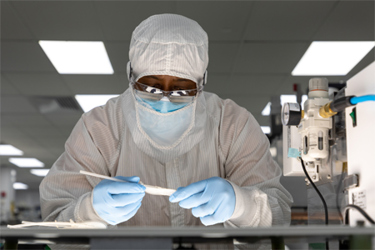Single-Use Manufacturing: Prioritizing Particulate Control For Safer Therapy Development
By Jessica Harvey, Supervisor, Quality Control Analytics, Charter Medical, LLC

The swift adaptation of single-use technologies (SUTs) to meet the growing demands of the bioprocessing industry creates significant opportunities for faster, safer, and more streamlined drug manufacturing. Yet SUTs also require close evaluation of their design, construction, and assembly to mitigate potential quality risks related to particulate contamination, particularly for cell and gene therapies.
Particles found in drug products can pose a significant risk to patient safety. Despite this, many SUT suppliers find it challenging to adequately address particulate control in the design and development of standard or custom polymer-based processing solutions such as bags, tubing, transfer sets, and manifolds with over molded designs used to manufacture advanced therapies. The issue lies in the fact that biologics-based therapies cannot be filtered, and therefore any particulates introduced to a therapy during manufacture or packaging cannot be removed. This can result in a range of issues for biopharmaceutical companies and manufacturers, including product recalls and, more significantly, the release of advanced therapies that could actually harm, rather than help, patients.
As regulations continue to evolve around the complexities of developing new treatment modalities and the single-use solutions that make them possible, identifying SUT suppliers who proactively address the challenges of particulate control will be crucial to enabling greater manufacturing success for these fragile, life-saving therapeutics.
Get unlimited access to:
Enter your credentials below to log in. Not yet a member of Cell & Gene? Subscribe today.
